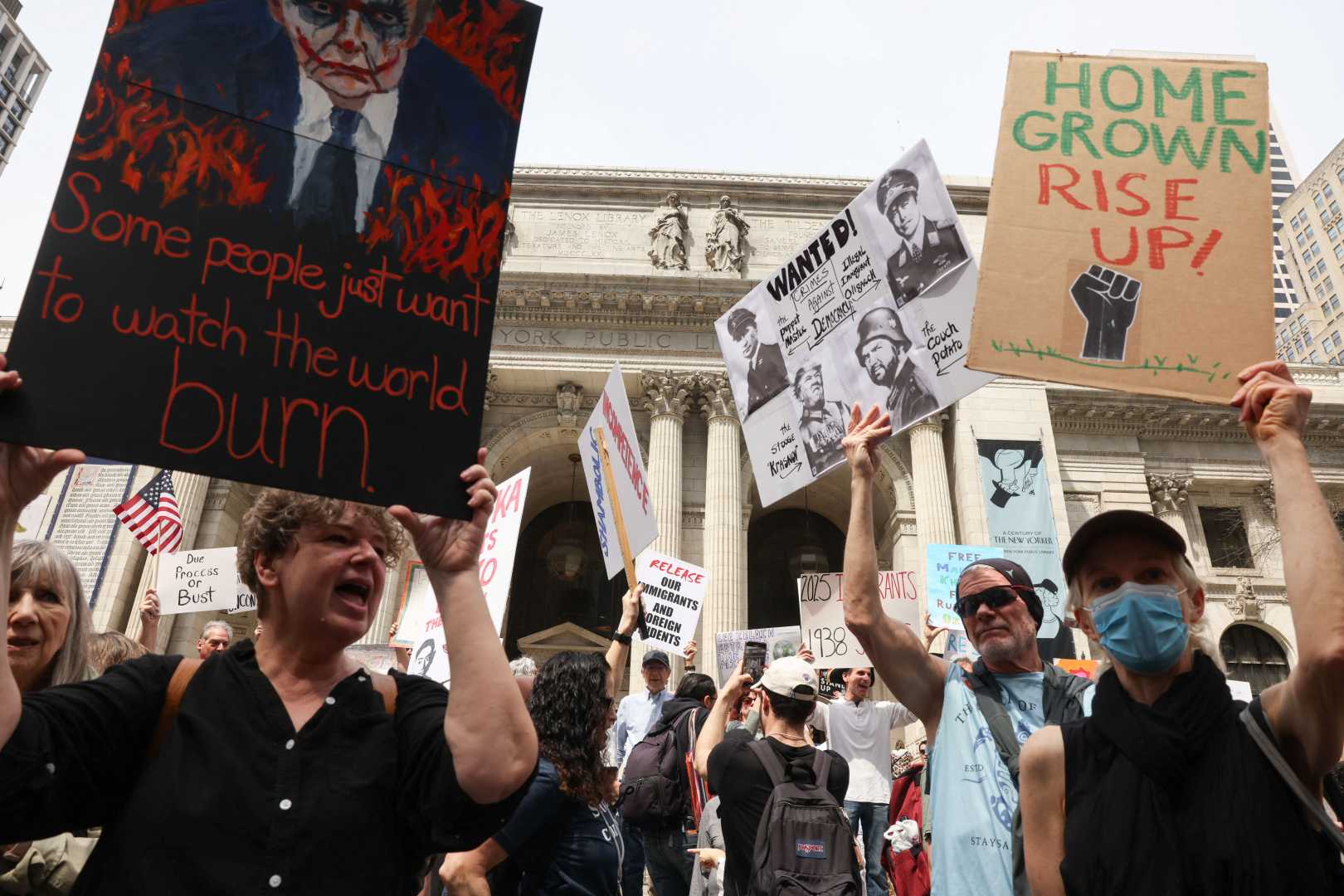News
Nationwide Protests Erupt Against Trump Administration Policies

WASHINGTON, D.C. — Thousands of demonstrators across the United States took to the streets on Saturday to voice their opposition to the Trump administration, as part of a grassroots initiative dubbed the “day of action.” Organizers reported that over 800 local protests, rallies, and educational events were planned to confront what they described as anti-democratic policies.
In the nation’s capital, hundreds of protesters gathered in Lafayette Square, near the White House, to express their concerns over issues such as immigration deportations and educational funding cuts. Michelle Willis, a paraeducator from New Bedford, Massachusetts, brought her children to the demonstration, stating, “We have to speak out, and you have to keep people energized.” Willis emphasized her commitment by noting she had attended multiple protests since Trump took office.
Protests also unfolded in major cities including New York, Chicago, and Philadelphia. In New York City, activists marched from the New York Public Library toward Central Park, drawing attention to the administration’s immigration policies. Marshall Green, a participant from Morristown, New Jersey, criticized the use of wartime laws to justify deportations, saying, “You cannot deport people without due process, and everyone in this country has the right to due process no matter what.”
In Philadelphia, demonstrators highlighted the city’s historical significance as the birthplace of American democracy. Kim Jordan, a 45-year-old protester, expressed her disappointment with the Democratic Party’s response to current issues, adding, “It’s difficult to talk to people about voting for Democrats because many feel that the party is not listening to them.”
The protests were organized by the 50501 Movement, a decentralized network aiming to mobilize grassroots action. The movement’s name stands for the idea of “50 protests in 50 states and one movement,” highlighting its national reach. Hunter Dunn, the national press coordinator for the movement, described the initiative as a response to what they view as illegal actions by the Trump administration and emphasized their commitment to non-violence and democracy.
In Lexington, Kentucky, participants rallied under the banner of “no kings,” advocating justice and inclusivity. Retired social studies teacher Sioux Finney held a sign that read, “History cannot be whitewashed. America includes all of us.” Finney urged attendees to stand up for justice and to engage in open discussions about historical narratives.
While many protests were specifically aimed at pressing political concerns, other events focused on community support. In Southern California, food drives were organized for residents impacted by recent wildfires and economic challenges, demonstrating a commitment to community empowerment beyond mere protest.
Despite the unprecedented number of demonstrations, some participants questioned the effectiveness of their efforts. Robin Wallace, a protester who recently began attending rallies, expressed uncertainty about their impact, stating, “We’ve got everything stacked against us.”
The White House did not respond to requests for comments regarding the protests. David Karpf, an associate professor at George Washington University, suggested that the fragmented nature of protests may work in their favor in the current political climate, as diverse groups unite in their outrage over the administration’s actions. “It’s kind of OK to have another rally every weekend that has people who are complaining about Tesla and also people complaining about cuts to cancer research,” he said.












